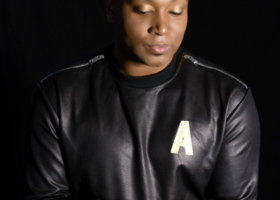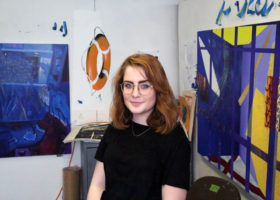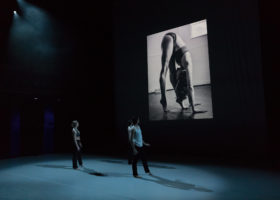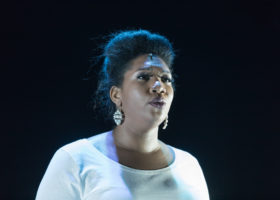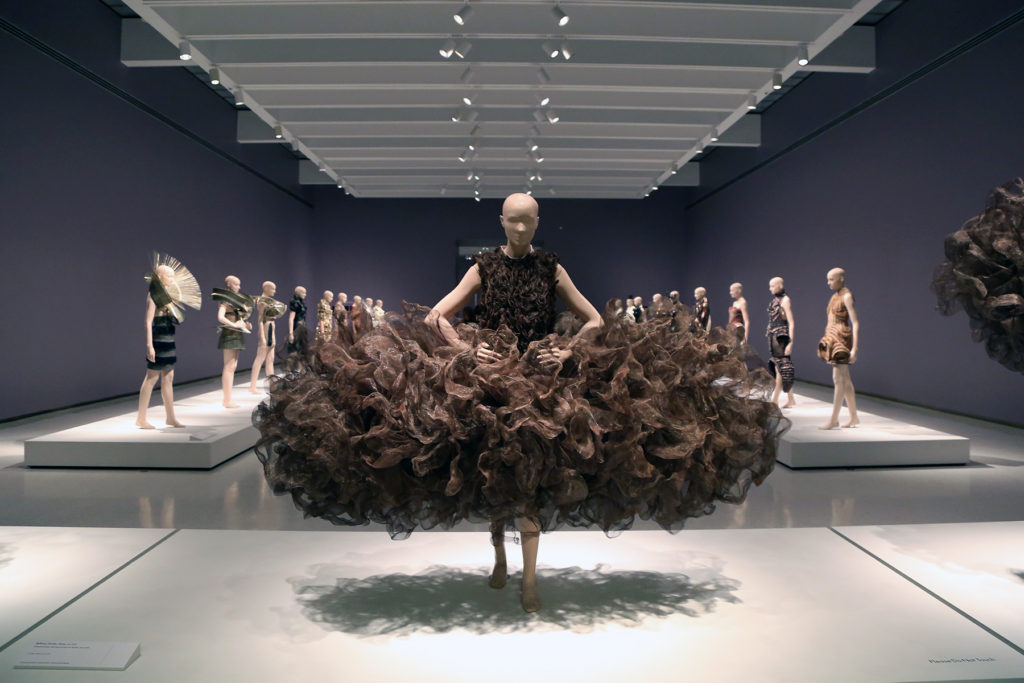
Since her debut in 2007, Dutch designer Iris van Herpen’s uniquely crafted garments have graced models on the runway and fashion-forward celebrities like Björk, Tilda Swinton, and Beyoncé. What sets van Herpen’s work apart is her embrace of science, taking inspiration from the natural world and synthesizing it with the unnatural and the technological. Alongside more traditional materials of couture, van Herpen pairs acrylic sheets, silicone coatings, treated leathers, and hand-cast polyurethane, but the young designer’s hallmark and most predominant element is 3D printing, which she has been credited with being the first to adapt for high fashion. Van Herpen’s designs are elegant, highly textured, intricately composed—and as innovative works of art, they’ve also made their way into museums.
Iris van Herpen: Transforming Fashion, on display now at the Carnegie Museum of Art, collects examples from fifteen of van Herpen’s collections. Invited to preview the exhibition, The Glassblock brought two friends, Elysia Purnell of Style412 and Daniel Gene Newman, II, for a walk-and-talk-through among the mannequins.
![]()
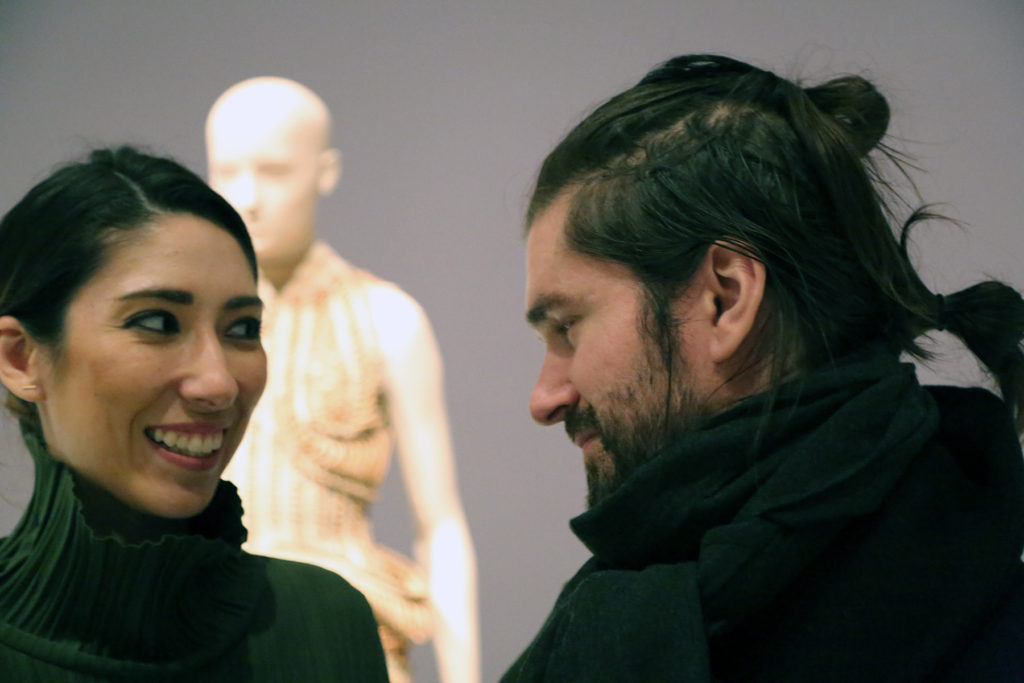
We gather around toasted pita chips, cheese, dips, and fruit for a few opening remarks. I ask our guests if they picked out certain clothes for this event.
Elysia Purnell: Oh, yeah—I saw this at the store and I thought, “I’m going to wear this to the Iris van Herpen exhibit,” because it has cool shapes that mimics what she is doing.
Daniel Gene Newman, II: I just came home and threw this on.
EP: Everyday is an Iris van Herpen day for you.
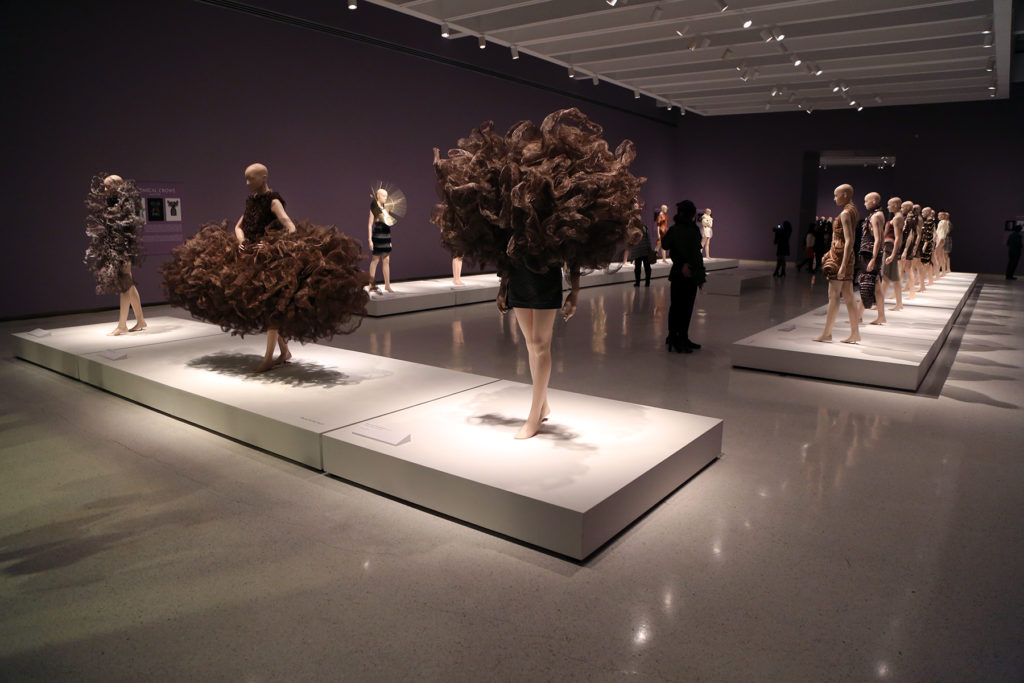
We enter the double doors into the first of three rooms, all cast in a dim, cool light. In front of us are three figures from van Herpen’s 2008 collection Refinery Smoke. Mesh metal threads weave away from the bodies in a static smoke effect. It is a powerful opening image—a triptych of varied material usage—and one that is never quite matched in surprise or scale.
DGN: The first three pieces… it looks like somebody being engulfed.
EP: Maybe we’ve been watching too much Project Runway, but this is something that traditionally breaks design rules. Like, you wouldn’t want to accentuate a woman’s hips on a dress.
DGN: It’s adding volume where you wouldn’t normally add volume.
EP: I have a feeling that we’ll be seeing a lot of rule breaking.
Walking deeper into the gallery, we see that each collection has three representative dresses. The dresses curve around mannequins, each in mid-step on an individual elevated platform. Within each collection, the platforms are separated by just a narrow space, but a wider gap separates the collections. It is a subtle but useful visual system.
Each garment emanates energy. The forms, though created to envelop a human body, are rather alien: A brown 3D print weaves around the body, building cathedral-like structures; a skeletal frame charts a new evolutionary form; pale heads of chicken-like creatures emerge from shards of ivory plastics.
DGN: Despite the fact that these dresses are from different seasons, and there are different characters to each theme, the color palette is very linear. … Everything is so symmetric.
We struggle not to compare the dresses with costuming from sci-fi films. None of us feel that the dresses are costumey, but it is hard to find many reference points outside of visions of the future.
EP: That’s always the concern with high fashion and runway. A lot of critics say, “I would never wear that in real life.” But this isn’t ready-to-wear fashion. High fashion is supposed to make that bold statement.
With the choice of materials and the textures, I’d imagine that it would be really difficult to put one side up, let alone two.
We notice that the exhibit’s mannequins (there are 45 in number) are covered in small, vein-like red lines—and they are painted by hand.
Purnell points out that the second room of the exhibition has a more modern feel. While the leather textures of the first room read as more primitive and organic, the second room has a more modern or futuristic feel, including the use of metallics.
After half an hour, we turn to critique. Few elements of styling are present since the focus is largely on the garment, but one dress, made solely of 3D printed materials, is accompanied by a speaker that rests on the model’s head. For such precise consideration of materials, the speaker feels out of place (“Looks like it was purchased from Urban Outfitters,” Newman, II quipped). Elsewhere, we see a bit a buckling of fabric on one dress. One of the 3D printed dresses relies too heavily on the 3D print, forgoing some needed detail to the black fabric underneath. A display of shoes located outside of the gallery in the vaulted space is impressive, but the footwear is too busy to pair with the dresses.
All in all, however, each piece is a stellar example of wild imagination married with mastery of creative repurposing of material. “Beyond the artistic value of van Herpen’s designs,” Purnell said, “is the notion of sustainability.” The ability to 3D print materials is not just a license to craft anything you can imagine; it also means that the garments do not have to be manufactured abroad, relying on exploitative sweatshop labor. We came away inspired and empowered.
Presented within a museum setting, the viewer must approach the pieces differently than if they were in a runway fashion show. A runway show is dedicated to a collection, and for van Herpen those center around themes: mummification, radiation invasion, synesthesia, crystallization. In the museum exhibit, however, these themes are lined up in a row so that the viewer is not judging a singular collection, but a designer. Through uniform lighting and staging, each dress is given equal weight, which allows the viewer to trace the designer’s chronological progression, and through a simple exhibit design, with uniform lighting and staging, there is no statement of judgment, there are no forced “wow” moments. The garments are given the space to do so themselves.
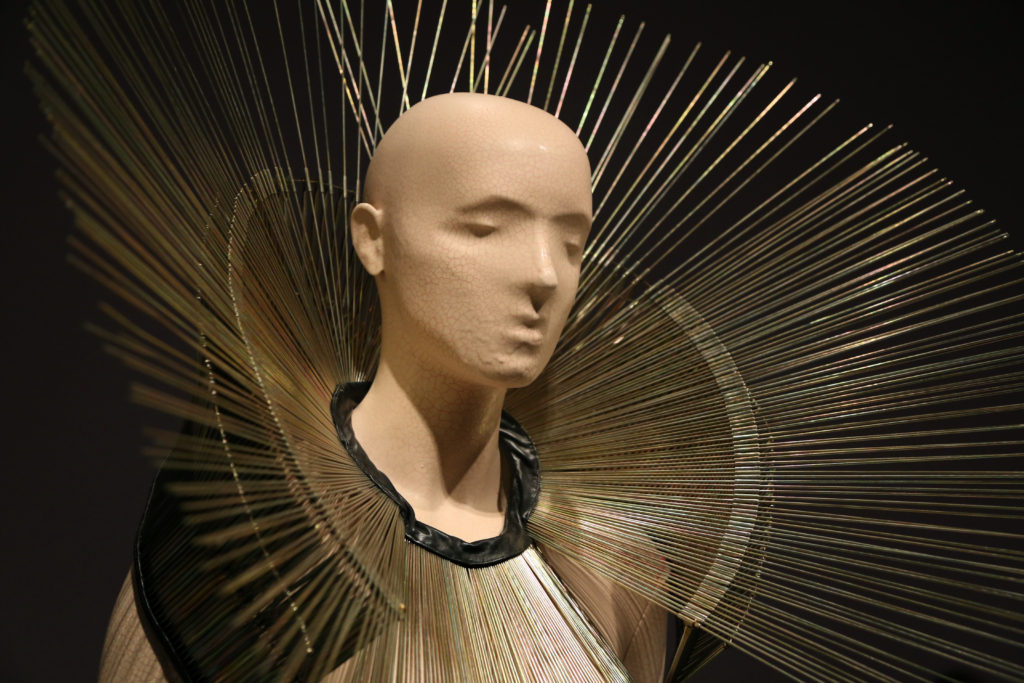
![]()
Carnegie Museum of Art’s exhibition Iris van Herpen: Transforming Fashion runs from February 4 to May 1, 2017.

